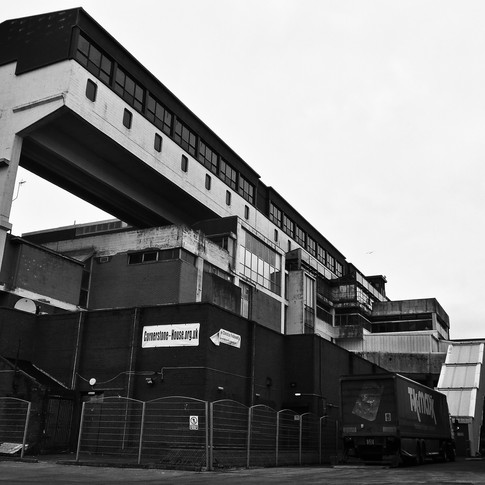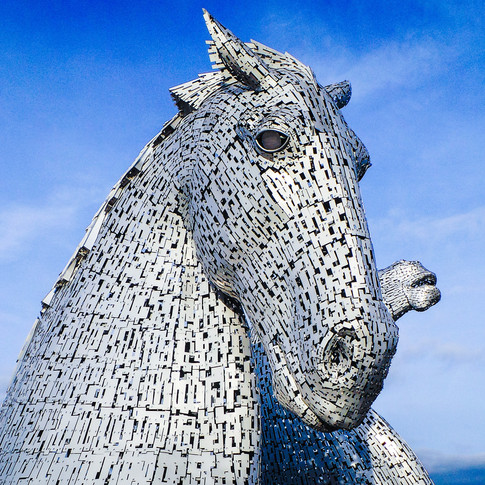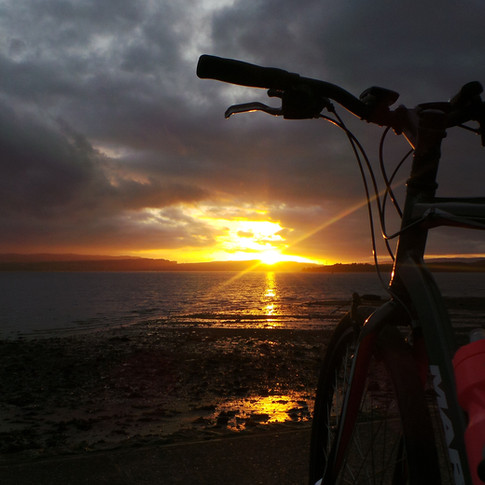Cycling from Glasgow to Loch Lomond
- Steven
- Jan 14, 2017
- 5 min read
Updated: Sep 18, 2020

What to do between Christmas and New Year? During the period between Christmas and New Year, I enjoy heading out on my bike on a short tour to take advantage of the quiet roads in big cities, cheap train tickets and discounted accommodation prices. It’s a funny time in the calendar when going to work feels strange, yet staying at home and doing nothing feels plain lazy!
This year I decided to head up to Scotland to ride around the Glasgow region following the Forth and Clyde Canal along the ‘Central Belt’ with the intention of stopping off at the impressive Falkirk Wheel, The Kelpies sculptures and the architecturally infamous new town of Cumbernauld.
From Wigan North Western to Glasgow...
I bought my Virgin train tickets to Glasgow for only £12 each way a couple of weeks in advance and decided to take my new Marin hybrid bike rather than my Brompton. I wanted to ride along canal paths which are unpredictably surfaced and this might have been a bit difficult in parts for the smaller Brompton wheels.
I left Manchester Victoria early in the morning on the 28th December on a largely deserted Northern train to Wigan before walking over the road to the Wigan North Western station to catch the Virgin Pendolino to Glasgow Central.
Frustratingly, the train was running 45 minutes late due to over-running engineering works and the morning was one of the coldest of the year. The skies were clear through the Lake District and the cool sun was beaming through the windows. I got off the train at Glasgow Central and was immediately struck by the rise in temperature in Scotland.
Onwards to Loch Lomond...
Turning left out of the impressive Glasgow Central station put me immediately on the cycle path to the SECC exhibition centre and the redeveloped Clyde Docks. Historically, this part of the city was an important shipbuilding area with thousands of workers and linked industries all helping make Glasgow the ‘second city of the Empire’.
Today, the scene is very different as the docks have been redeveloped into a media centre with the offices of the BBC, STV/ITV and the Daily Record all nearby. The impressive Science Museum, Zaha Hadid designed Transport Museum and the SSE Hydro Arena also ensure that this is a lively leisure area too.
Following the Forth and Clyde Canal...
The cycle route I followed was the National Cycle Route 7 between Glasgow and Loch Lomond around 25 miles from the city centre. This trail follows disused railway lines, the Forth and Clyde Canal towpath and riverside paths all the way to Balloch on the shores of picturesque Loch Lomond.
As I left Glasgow along the old railway line passing through derelict businesses and tenements, I picked up the Forth and Clyde Canal towpath just outside the post-industrial town of Clydebank.
I have an intimate knowledge of this canal path as in 2012, I completed an ultramarathon running between Glasgow and Edinburgh. The journey will always be remembered as 55 miles of pure pain and it was good to be back cycling along the towpath rather than running.
Unexpectedly the route that I was following passed the first lock on the canal towpath and looked outwards towards the Clyde Sea. As I had previously cycled from Fort William to Inverness along the Caledonian Canal, knowing that I had explored fully explored another waterway was a welcome feeling.
Through Dumbarton and onto Balloch...
Along the way, I passed through the ancient town of Dumbarton on the Clyde coast and was immediately impressed by the castle that sits atop a huge rock. Dumbarton Rock is classified as an Ancient Monument and ironically, the stadium for Dumbarton F.C lies directly beneath the castle which is not exactly a fortress!
Passing through the town, I crossed over the famous and historic bridge out of Dumbarton and re-joined the riverside cycle path towards Balloch for 6 miles.
Balloch is the main centre for southern Loch Lomond and thrives as a popular shopping location and accommodation base for exploring Britain’s largest freshwater lake. There are normally hundreds of people going on boat cruises around the lake in summer, but in mid-December, I was slightly frustrated to only see a couple of scheduled sailings and the boat just pulling out of the small harbour for the 1300 tour!
I did plan on meeting that ferry to see more of the lake as I did not have enough time to around, so I asked the local tourist offices what my options were. The informative lady suggested that I should head to Tarbet on the Loch Lomond cycle trail about 12 miles away. However, due to infrequent trains back to Glasgow, I ruled this out and decided to head to Helensburgh.
Seeing the most amazing sunset in Helensburgh...
Climbing over the steep hill on the A818 west of Loch Lomond felt good compared to the pretty slow pace on canal towpath and I was able to get a sweat on for the first time all day. I arrived in Helensburgh and was immediately impressed. The wide vista overlooking the Clyde offered stunning views of nearby Greenock and the surrounding hills.
The town of Helensburgh is a popular and exclusive commuter town, but has been historically a famous seaside resort for Glaswegians and was home to John Logie Baird – the inventor of the television.
I could not have arrived in the town at a better time as the sun was setting dramatically over the bay illuminating everything in pink and orange. This was one of the best sunsets I have ever seen and was a perfect end to my first day of cycling in Scotland.
Visiting some unlikely places along the way...
The next day I woke up in the large and elegant youth hostel in Kelvingrove near the city centre and set off through the unusually quiet streets of Glasgow’s East End. I followed the main road out of the city and rode past many of Glasgow’s bleak, post-war housing estates.
My main destination of the day was Cumbernauld about 20 miles from the city centre. To be honest, this is not a place people generally visit through choice. Cumbernauld was built as a new town in the 1960s to alleviate stress on Glasgow’s post-war rebuilding and as a modern alternative to the slum terraces and tenements that blighted Glasgow for many years. As a person with a keen interest in brutalist architecture, this is the 'mothership' in Britain.
What brings architecture fans and students to the town is the giant concrete shopping centre that looks like a combination of a concrete spaceship and ET – the extra-terrestrial! The centre has won awards for being the worst building in Britain and from certain angles, it is undoubtedly ugly.
However, in an age of identikit glass buildings and shopping centres that have formed the backbone of Britain’s regeneration projects, this type of post-war architecture served as a vision of a better future and it would be a shame to see British brutalist architecture demolished and go the way of the iconic and equally infamous Tricorn Centre in Portsmouth.
Leaving Cumbernauld, Falkirk and Grangemouth...
I left Cumbernauld's New Town on the wide dual carriageways that run through the city towards Falkirk with the aim of stopping off at the Falkirk Wheel and the equally stunning Kelpies horse sculptures close to the new Falkirk football ground before my train departed Glasgow.
Upon reaching The Kelpies, I reached the end of the Forth and Clyde Canal near Grangemouth on the North Sea coast and realised that I had cycled a ' Scottish coast to coast' in a couple of days from sea to sea on both sides of the Central Belt.
I caught the train back to Glasgow and arrived back into Manchester ready for work the next day. Overall, this was a great one night cycle tour that packed in so much in a short amount of time and was a great way to spend a few days on the bike at a time of year when most people wouldn't consider a cycle tour!
























